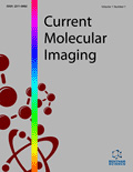Abstract
Apoptosis or genetically programmed cell death is a universal phenomenon involving many pathophysiological conditions. Externalization of phosphatidylserine from the inner leaflet to the outer leaflet of the cell membrane is an early event in the apoptotic cascade occurring before membrane blebbing and DNA fragmentation. Annexin A5, a 36 kDa endogenous protein, specifically binds to phosphatidylserine with a nanomolar affinity in presence of calcium ions. In molecular imaging, phosphatidylserine has been used as a molecular target for the imaging of apoptosis with 99mTc-annexin A5 as a molecular probe. In clinical research, recombinant human 99mTc-annexin A5 has been successfully used in phase I, II, III and IV trials for the non-invasive assessment of apoptotic reserve in vivo. In academic centers, annexin A5 imaging has also been the subject of theses including doctoral theses, master theses and memoire. This review highlights the large body corpus of literature on the radiolabeled annexin A5 imaging including publications on clinical trials and academic dissertations.
Keywords: Apoptosis, clinical trials, programmed cell death, phosphatidylserine, 99mTc-annexin A5, theses.
 31
31

